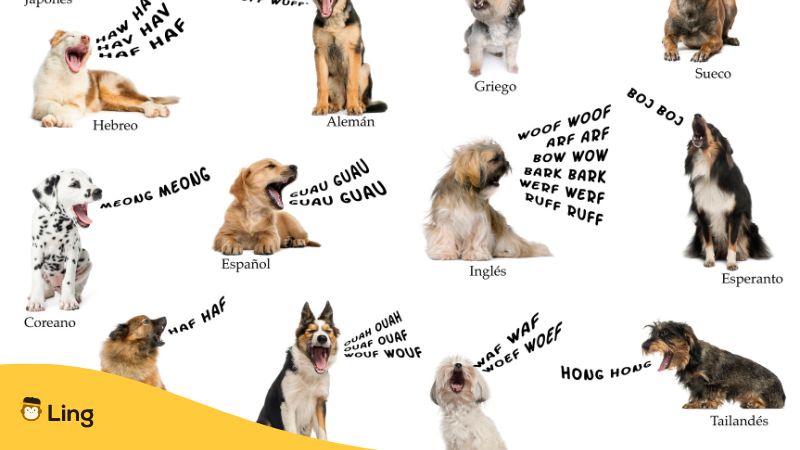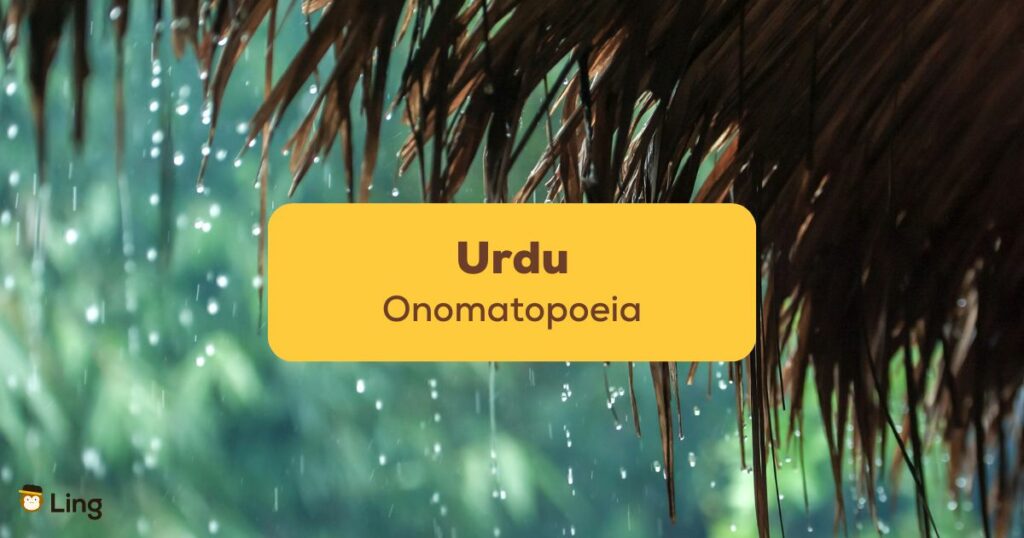Bored of learning difficult Urdu vocabulary and want to refresh yourself? Don’t look further. Here’s a list of 12 Quirky Urdu Onomatopoeia that can serve as a word game for you. Learn and understand what these represent, and play an identification game with your friends. Let’s get started!
But before delving into the fun, learning what Onomatopoeia is and where we can use it effectively is important. Considering this, this article will explore what Urdu Onomatopoeia is and provide different Urdu terms for it, besides giving you a list of Onomatopoeic words to learn and have fun.
Table Of Contents
What Is Urdu Onomatopoeia?
Onomatopoeia is a figure of speech that refers to words formed by imitating sounds. In simpler words, it denotes words that mimic or are similar to the sounds of the things they represent. We can find Onomatopoeia in almost every language!
Onomatopoeic words are generally used in Urdu poetry, as they create vivid imagery in terms of sight and sound. For instance, if we hear the word ‘cuckoo,’ we can imagine the sound of a bird cuckoo-ing, or the word ‘meow’ immediately forms an image of a cat in our mind. So, in Urdu, any word that imitates the sound of the thing it represents is known as Urdu Onomatopoeia.
12 Common Urdu Onomatopoeia
Urdu has several onomatopoeic words that add beauty and colors to the language. These are divided into further categories, such as actions, emotions, animal noises, and nature sounds. Let’s look at 12 common examples of Urdu Onomatopoeia divided into each category:
Nature Sounds
1. Tip Tip – ٹِپ ٹِپ
It’s the dripping sound of tap or rainwater.
2. Chan Chan – چھن چھن
It’s the sound of tinkling bells and other things that emit a similar sound.
3. Gar Gar – گڑ گڑ
The rumbling sound of thunder.
Animal Sounds
4. Woof Woof – ووف ووف
The sound of a wolf roaring.
5. Bhao-Bhao – بھاؤ بھاؤ
A Dog Barking.
6. Miaoon – میاؤں
It’s the sound of the cat.
7. Kaan-Kaan – کان کان
This onomatopoeia refers to the sound of a crow’s cawing. It imitates the repetitive and loud sound that crows make.
Emotions
8. Hahaha – ہاہاہاہا
It’s the sound of laughter.
9. Siski – سسکی
The sound of sobbing or deep breaths while crying.
10. Aah – آہ
It imitates the sound of deep sighs, either due to pain or a sudden relief. This sound represents various emotional expressions.
Actions
11. Tik-Tik – ٹِک ٹِک
The ticking sound of the clock or the sound of footsteps wearing heels.
12- Chup-Chap – چُپ چاپ
It refers to the sound of silence, a quiet environment.

How Do You Say Onomatopoeia In The Urdu Language?
In Urdu, Onomatopoeia is referred to as ism e sooti (اسمِ صوتی). It’s an Urdu word that literally means imitation or reflection. Yet, remember that the word Onomatopoeia is a noun. Thus, in Urdu, you can call it ism e sooti (اسمِ صوتی), where ism (اسم) means noun and sooti (صوتی) means sound.
Frequently Asked Questions About Urdu Onomatopoeia
1. What Are 5 Sentences Using Onomatopoeia?
Following are 5 examples of sentences using Urdu onomatopoeia:
- A child ran away out of fear after listening to the barking of the dogs – Kutton ki bhao bhao ki awaz sun kar bacha dar ke bhag gaya (وں کی بھاؤ بھاؤ کی آواز سن کر بچہ ڈر کے بھاگ گیا۔)
- The chirping of birds makes mornings more beautiful – Chirya ki choon choon subah ko or haseen bana deti hai (چڑیا کی چوں چوں صبح کو اور حسین بنا دیتی ہے۔)
- After the rain, the raindrops were dripping tip tip from the roof – Barish ke baad chat se pani tip tip kar ke gir raha tha (بارش کے بعد چھت سے پانی ٹپ ٹپ کر کے گر رہا تھا۔)
- Her sound of sobbing was echoing in the whole room – Us ki siskion ki awaz poore kamre main goonj rahi thi (اس کی سسکیوں کی آواز پورے کمرے میں گونج رہی تھی۔)
- Bee is buzzing in my ears – Makhi mere kaan main bhanbana rahi hai (مکھی میرے کان میں بھنبھنا رہی ہے۔)
2. Is Onomatopoeia A Real Word?
Yes, Onomatopoeia is a real word that falls under the category of figure of speech. It describes the words that imitate or resemble phonetically different sounds. For example, scream – cheekh (چیخ), buzz – bhanbhanat (بھنبھنائٹ), oh (اوہ), etc.
These words, when heard, evoke the sound that they resemble or represent. These sounds can be of objects, animals, actions, or emotional expressions. Plus, this concept of onomatopoeia is central to almost all languages, like English, Punjabi, etc, bringing an aspect of fun to the language.
3. What Are The Two Types Of Homonyms?
Homonyms are words having similar spelling and pronunciation but different meanings. There are two types of homonyms, namely homographs and homophones.
Homophones have the same sounds, but often have different spellings. Homographs are opposite as they have similar spellings but often sound different.
Homonyms and their types are central to many languages, like Urdu and English. For example, examples of homonyms in English are: accept – except, scent – sent, hi – high, etc. Exemplary Urdu homonyms are sher (شیر – lion) and sher (شیر – a poetic verse), soott (سوٹ – suit) and soot (سوت – yarn), etc.
Explore More Vocabulary And Excel In Your Preferred Language
Urdu Onomatopoeia doesn’t end here. Urdu vocabulary is vast, poetic, and expressive. So, if you’re interested in learning more about the Urdu language but don’t know where to start, the Ling app is here to the rescue.
With the determination to teach and engage language learners interested in Asian and Eastern European languages, the Ling app offers interactive lessons for these languages. These lessons include fun exercises, vocabulary tables, quizzes, and examples to let you practice anytime you want to. Plus, learning with Ling only requires 10 minutes daily as we prioritize quality learning over quantity. Nonetheless, slow and steady wins the race. So, start learning Urdu or your preferred language with Ling and transform your learning experience!


































































